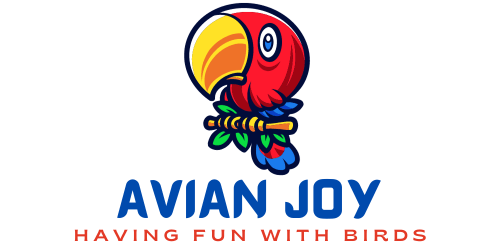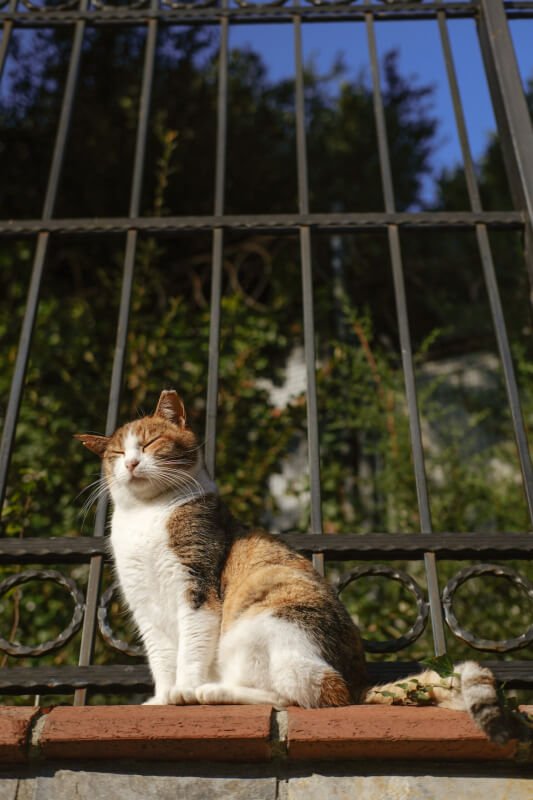Imagine you’ve just brought home a beautiful, vibrant bird only to discover that it’s extremely shy and nervous. It hides in its cage, flutters anxiously whenever you approach, and refuses to let you handle it. But fear not! With a little patience and understanding, you can gradually coax your feathered friend out of its shell and create a trusting bond. In this article, we will explore some gentle techniques and proven strategies to help you tame and handle a shy or nervous bird, allowing it to blossom into a confident and sociable companion.

Understanding Bird Behavior
Birds, like any other animals, have their own unique behaviors and tendencies. To successfully tame and handle a shy or nervous bird, it is important to first understand the signs that indicate their shyness or nervousness. This will allow you to better comprehend their needs and provide the necessary support.
Recognizing signs of shyness or nervousness
Shy or nervous birds often display specific behaviors that can help you identify their emotional state. These may include hiding in their cage, fluffing out their feathers, crouching down, or avoiding eye contact. They may also become vocal and express their discomfort through squawking or chirping anxiously. Paying close attention to these signs will enable you to respond appropriately and address their needs.
Identifying potential causes of shyness or nervousness
There are various factors that can contribute to a bird’s shyness or nervousness. It could be a result of past trauma or negative experiences, lack of socialization, or even a genetic predisposition. Additionally, changes in their environment, such as moving to a new home or the presence of loud noises, can also cause distress. By identifying the underlying causes, you can tailor your approach to help alleviate their anxiety and build trust.
Creating a Safe Environment
Creating a safe and comfortable environment is crucial in gaining a shy or nervous bird’s trust. By providing them with a quiet and secure space, you can help them feel at ease and reduce their stress levels.
Providing a quiet and secure space
Find a suitable area in your home where your bird can have their own space and minimize exposure to loud noises. Place their cage in a peaceful corner, away from busy areas, and ensure they have a sense of privacy. This will allow them to retreat and feel safe whenever they feel overwhelmed.
Ensuring a comfortable temperature
Birds are highly sensitive to temperature changes, and extremes can impact their well-being. Maintain a comfortable temperature in the room where your bird is kept, ensuring it falls within the optimal range for their species. Providing a stable and pleasant environment will help them feel more secure and less stressed.
Arranging appropriate perches and toys
Creating a stimulating environment with appropriate perches and toys is essential for a shy or nervous bird’s well-being. Offer them a variety of perches at different heights, as well as different types of toys that encourage mental and physical exercise. This will help prevent boredom, encourage exploration, and provide a sense of security.

Building Trust
Building trust with a shy or nervous bird requires patience, understanding, and consistent positive reinforcement. By adopting the right approach, you can gradually help them feel more comfortable in your presence.
Approaching the bird with patience
Approaching a shy or nervous bird should be done slowly and patiently. Move calmly and avoid making sudden movements or loud noises that could startle them. As you approach their cage, speak softly and kindly to them, allowing them to become familiar with your voice. Building trust takes time, so be patient and respect their boundaries.
Using positive reinforcement
Positive reinforcement is a powerful tool in shaping a bird’s behavior and building trust. Reward their calm and relaxed behavior with treats or praise, allowing them to associate positive experiences with your presence. This will help them feel more comfortable and build a positive association with interactions.
Respecting the bird’s personal space
Respecting a shy or nervous bird’s personal space is crucial to fostering a sense of security. Avoid forcing interactions or invading their cage without invitation. Allow them to approach you on their own terms, and always be attentive to their body language and signals. By respecting their boundaries, you will create a safe space where they can feel in control and gradually build trust.
Establishing a Routine
Establishing a consistent routine is beneficial for both you and your bird. Having a structured daily routine provides a sense of security and predictability, helping to alleviate anxiety and build a stronger bond.
Setting consistent feeding times
Regular feeding times create a routine that birds can rely on, reducing their stress levels. Set specific times for their meals and ensure they receive a well-balanced diet appropriate for their species. Consistency in feeding contributes to their overall well-being and also helps establish trust and reliability.
Implementing a regular grooming schedule
Regular grooming sessions are essential for maintaining a bird’s health and well-being, and they also contribute to building trust. Incorporate grooming into your routine, such as gentle beak and feather care, providing a positive experience for your bird. This regular interaction will help them become accustomed to your touch and strengthen your connection.
Creating a structured daily routine
Birds thrive on routine and can become more comfortable when they know what to expect. Creating a structured daily routine that includes playtime, exercise, and rest will contribute to their mental and emotional well-being. Consistency in their daily activities will help reduce anxiety and allow them to feel more at ease.

Socializing with Other Birds
Introducing a shy or nervous bird to other calm and friendly birds can have a positive impact on their socialization skills. Careful introductions and supervised playtime can help them feel more confident and comfortable in the presence of their feathered companions.
Introducing the bird to other calm and friendly birds
Gradual introductions to other birds can be beneficial for shy or nervous birds. Choose birds with a calm and friendly disposition, as this will create a positive and supportive environment. Start with short, supervised interactions and gradually increase the duration as the birds become more comfortable with each other.
Organizing supervised playtime
Supervised playtime is an opportunity for birds to socialize and engage in natural behaviors. Arrange play sessions in a neutral space, ensuring there are no potential hazards or conflicts between the birds. This controlled environment allows the shy or nervous bird to interact with others under supervision, promoting positive socialization experiences.
Encouraging positive interactions
Encouraging positive interactions between birds can help boost a shy or nervous bird’s confidence. Provide toys or activities that facilitate shared play, promoting bonding and healthy socialization. Monitor their interactions closely to ensure they are comfortable and stress-free. Positive experiences with other birds can contribute to the overall well-being and happiness of your shy or nervous bird.
Handling Techniques
Handling a shy or nervous bird requires gentle and patient techniques. By gradually acclimating them to your touch and providing a sense of safety, you can help them overcome their fear and develop trust in your handling.
Mastering the art of gentle handling
Gentle handling is essential when working with shy or nervous birds. Approach them slowly and confidently, using slow and deliberate movements. Avoid sudden gestures or grabbing motions, as these can startle or frighten the bird. Always handle the bird with utmost care and respect, supporting their body and wings in a secure and comfortable manner.
Using a towel or gloves for nervous birds
For extremely nervous or fearful birds, using a towel or gloves can provide a sense of security for both the bird and the handler. Wrapping the bird loosely in a towel or wearing gloves can help reduce their fear and prevent them from becoming overly stressed during handling. This technique should only be used when necessary and with caution, ensuring the bird’s well-being is prioritized.
Gradually getting the bird accustomed to your touch
To help a shy or nervous bird become more comfortable with your touch, gradually introduce them to gentle physical contact. Begin by allowing them to become accustomed to your hand near their cage, then progress to offering treats or toys with your hand. Over time, you can start gently stroking their feathers or softly petting them, always respecting their comfort level. Building trust through touch requires patience and sensitivity to the bird’s individual needs.
Training Exercises
Training exercises are an effective way to bond with a shy or nervous bird and build their confidence. They provide mental stimulation, reinforce positive behavior, and offer opportunities for learning and growth.
Clicker training to associate positive experiences
Clicker training is a popular positive reinforcement technique that can be used with birds. By associating the sound of a clicker with rewards, such as treats or praise, you can communicate to the bird that they have performed a desired behavior. Clicker training can help build trust and strengthen the bond between you and your bird, as well as enhance their learning abilities.
Teaching basic commands and tricks
Teaching your shy or nervous bird basic commands and tricks can be an enjoyable and rewarding experience for both of you. Start with simple commands, such as “step up” or “target,” and gradually progress to more complex tricks. Break down each behavior into manageable steps and offer rewards for successful completion. This form of positive reinforcement training will help your bird gain confidence and increase their trust in you.
Using target training to build confidence
Target training is a useful technique that can help build a shy or nervous bird’s confidence. Using a target stick or a designated object, guide the bird to touch the target with their beak or foot. Reward their successful interactions with treats or praise. Target training provides mental stimulation and allows the bird to actively participate in their own training, enhancing their confidence and trust in the process.
Enrichment Activities
Enrichment activities play a vital role in keeping a shy or nervous bird mentally stimulated and engaged. By providing a stimulating environment, you can help alleviate boredom and anxiety, promoting overall well-being.
Providing mental stimulation through toys and puzzles
Birds are intelligent creatures that require mental stimulation to thrive. Offer a variety of toys and puzzles that encourage problem-solving and engagement. Foraging toys, puzzle feeders, or interactive toys can provide mental challenges and promote a sense of achievement when the bird successfully solves the task at hand. Rotate their toys regularly to keep their environment fresh and exciting.
Introducing foraging opportunities
In the wild, birds spend a significant amount of time foraging for food. Mimicking this natural behavior in captivity can help alleviate stress and anxiety. Hide treats or food in various locations throughout their cage or provide foraging toys that require the bird to actively search for their food. By introducing foraging opportunities, you offer a rewarding and mentally stimulating experience for your shy or nervous bird.
Exploring the benefits of bird music or recordings
Birds are highly responsive to auditory stimulation, and playing bird music or recordings can have a calming effect on them. Soft instrumental music or recordings of birdsong can create a relaxing environment and help reduce anxiety. Experiment with different melodies and observe how your bird responds. Providing soothing sounds can contribute to a peaceful and secure atmosphere for your shy or nervous bird.
Professional Assistance
If you are struggling to handle or tame a shy or nervous bird, seeking professional assistance can be beneficial. Avian veterinarians and bird behaviorists have expert knowledge and experience in dealing with bird behavior and may offer valuable guidance tailored to your bird’s specific needs.
Consulting an avian veterinarian
Avian veterinarians specialize in the health and well-being of birds and can provide valuable insight into understanding and addressing your shy or nervous bird’s behavior. They can assess their overall health, identify any underlying medical conditions, and offer advice on creating a nurturing environment. Regular check-ups with an avian veterinarian will ensure your bird’s physical health is optimal and support their emotional well-being.
Seeking advice from a bird behaviorist
Bird behaviorists are professionals who specialize in understanding bird behavior and can provide guidance on handling and taming shy or nervous birds. They can help assess the underlying causes of your bird’s behavior and offer targeted strategies and techniques to help you build trust and confidence. By working closely with a bird behaviorist, you can develop a personalized plan to meet your bird’s specific needs.
Joining bird clubs or support groups
Joining bird clubs or support groups can provide a wealth of knowledge and support for bird owners. Interacting with other bird enthusiasts who have experienced similar challenges can offer valuable insights and practical advice. Additionally, bird clubs often organize educational events and workshops that can further enhance your understanding of bird behavior and handling techniques.
Patience and Persistence
Taming and handling a shy or nervous bird requires patience, persistence, and a deep understanding of their individual needs. Remember that progress takes time, and each bird is unique in their own way.
Understanding that progress takes time
Building trust and taming a shy or nervous bird is a gradual process that may take weeks, months, or even longer. It is important to understand that progress is not linear and that setbacks may occur along the way. Be patient with your bird and celebrate each small achievement. With time and consistent effort, you will witness the positive transformation of your shy or nervous bird.
Being consistent in your efforts
Consistency is key when working with shy or nervous birds. Establishing a routine and sticking to it will help them feel secure and build trust. Maintain regular feeding times, grooming sessions, and training exercises. Consistent interactions, positive reinforcement, and a consistent environment will contribute to their overall well-being and allow them to develop trust in you.
Adapting methods based on individual bird’s needs
Each bird is unique, and what works for one may not work for another. It is important to be flexible and adapt your methods to suit the individual needs of your shy or nervous bird. Observe their responses, adjust your approach if necessary, and tailor your interactions to their comfort level. By understanding and respecting their individuality, you can create a nurturing and supportive environment that fosters trust and confidence.


